- Home
- ABOUT US
- Shiseido Talks
- Richer and more sustainable. The founding members of the skin & mind care brand “BAUM” give a behind-the-scenes account of its creation.
Richer and more sustainable.
The founding members of the skin & mind care brand “BAUM”
give a behind-the-scenes account of its creation.
October 11, 2021

In June 2020, BAUM made its debut as a global skin beauty brand in the prestige category. It focuses on the “power of trees” that have been harmonizing with the changing environment since ancient times, while promoting the initiatives to solve social issues and reduce environmental impact under the Shiseido’s philosophy “BEAUTY INNOVATIONS FOR A BETTER WORLD.” Three years after its conceptualization, it was launched as a skin & mind care brand under the theme of “coexistence with trees.” What are the thoughts of the project team that endeavored to balance a sustainability mindset and the beauty business and then tackled the new unconventional challenge of using wood for cosmetics packaging to embody the theme? We talked with three members: Ayami Nishiwaki, BAUM Brand Manager, Motoki Okoshi responsible for the outer packaging design at Global Innovation Center, and Midori Yamada, Package Designer of the Creative Division.
To create what inspires a “genuine desire to use” instead of “imposing a sustainable product”
―Could you talk about the background of launching BAUM?
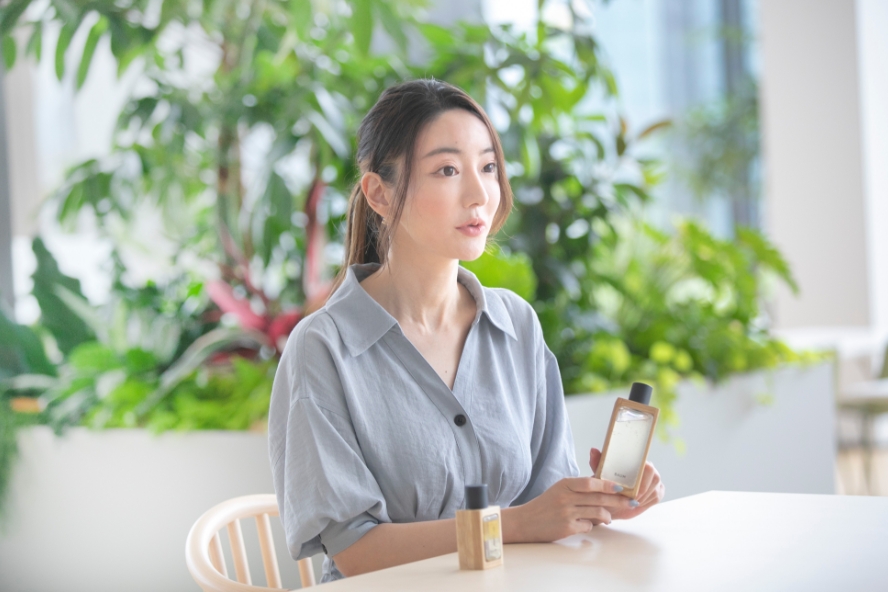
Ayami Nishiwaki, BAUM Bbrand Mmanager
Nishiwaki: We started by reviewing what actually constitutes prestige or “richness” reflecting the times in developing a new brand in the prestige category. In doing so, we found a shift from “material” richness to “psychological” richness. The younger generation, particularly, seems to emphasize with psychological richness rather than enjoying a material-rich life, such as by connecting their purchasing behavior to society in certain ways and thus increasing a sense of self-affirmation and self-satisfaction. This naturally leads to highlighting “sustainability” as a key word.
When we as a Japanese company think about “sustainability,” “coexistence with nature” is the first thing that comes to mind.
As symbolized in the phrase “itadakimasu (thank you for the meal or offering),” maintaining a sense of awe and gratitude towards nature and living by efficiently circulating the limited resources in this island nation are deeply engrained elements of Japanese culture. We started brand value development with that stance. Among a wide variety of ideas, we ultimately decided to use the idea of ”coexistence with trees.” Trees are familiar materials for Japanese culture and symbolize the circulation of resources. We think them the best motif to represent what a prestige brand should look like in the coming age.
―I heard that your team focused on “a sense of familiarity upon use” as the consumers’ motive for selecting products while being aware of sustainability.
Nishiwaki: Yes. We had considerable doubt about unilateral promotion of the sustainability mindset, which might not have taken root in the market. Everyone can agree that the right choice for humanity is “something that is good for the global environment.” Although we did wonder to what extent people would be able to identify with such an idea in the “cosmetics” field which involves a greater range of preferences. When pursuing sustainability to the fullest extent, the end is minimalism. Yet cosmetics have an aspect of enjoying luxury, and what matters here is the emotional uplift brought about by using the product. In such a sense, emotional elements in design and quality mean a lot. How we can pursue sustainability as “a new style of richness” without depriving people of the “familiarity” upon use is the most important element and determines the success of the brand, we believe. That’s because we thoroughly committed to finding the right balance. Aiming to induce reactions such as “curiosity lead me to this product, but it’s also sustainable,” we never compromised in the pursuit of overwhelmingly “cool” products and products that people would truly want.
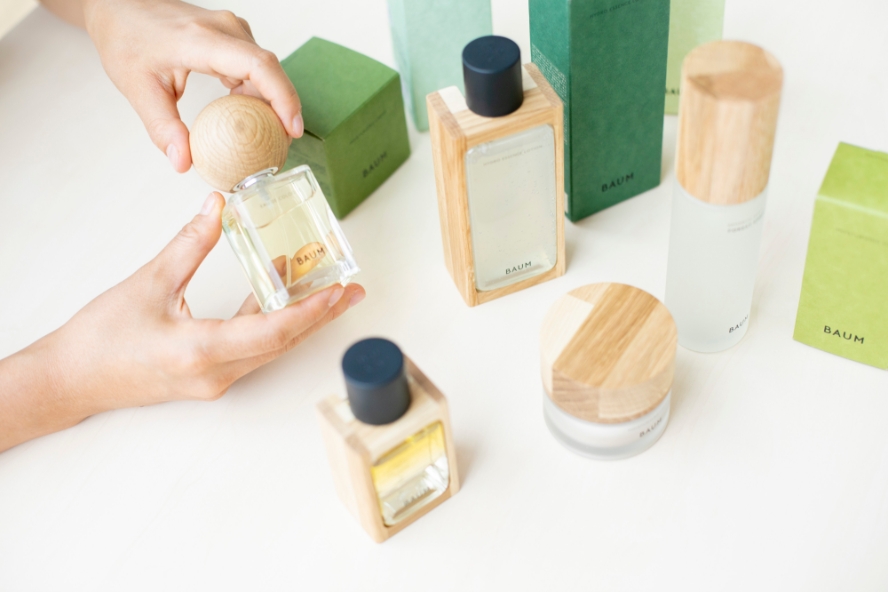
All senses deeply healed. We want to provide such a “skin & mind care” experience.
―BAUM has been realized through solid building of the brand story that “consumers’ rich experience is organically connected with the context of being sustainable.” Am I right?
―What kind of experience is the “skin & mind care” that BAUM touts?
―Could you talk about the package design next? How did you incorporate the themes like “sustainability” and “trees”?

Midori Yamada, Package Designer of the Creative Division
Yamada: Since the brand concept is “coexistence with trees,” we use real recycled wood for packaging. Many of the cosmetics packages in the current market promote clever design, but BAUM aims to be something that can easily share any space in a house, with interior-like elements in mind.
―You use upcycled wood from Karimoku Furniture for packaging, don’t you?
―There aren’t many cases of using wood for cosmetics packaging.
Okoshi: Indeed. I’m in charge of packaging, but with little experience of using wood for the product itself, I was very worried in the beginning. Because wood is a natural material and it generates woodchips, there were many issues regarding hygiene management. But thanks to the efforts of Karimoku, for example, by making a special clean room to prevent woodchip generation, we could eventually overcome the hurdles. We also worked with factory and quality management staff to solve the concerns one by one to prevent woodchip generation, worm contamination and microbial infection.

―Had refill design been planned from the beginning as a means to create a sustainable brand?
―What were the difficulties in producing actual packages?
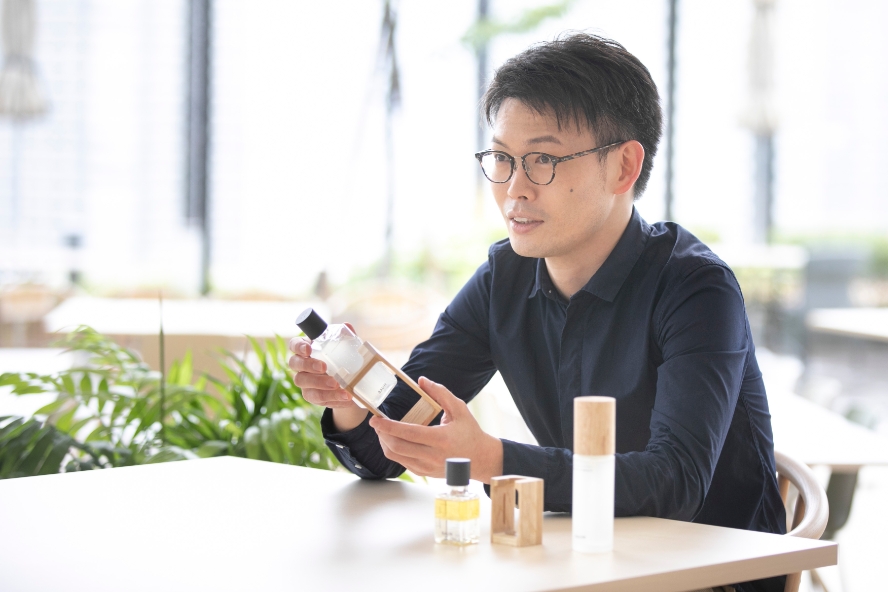
Motoki Okoshi responsible for the outer packaging design at Global Innovation Center
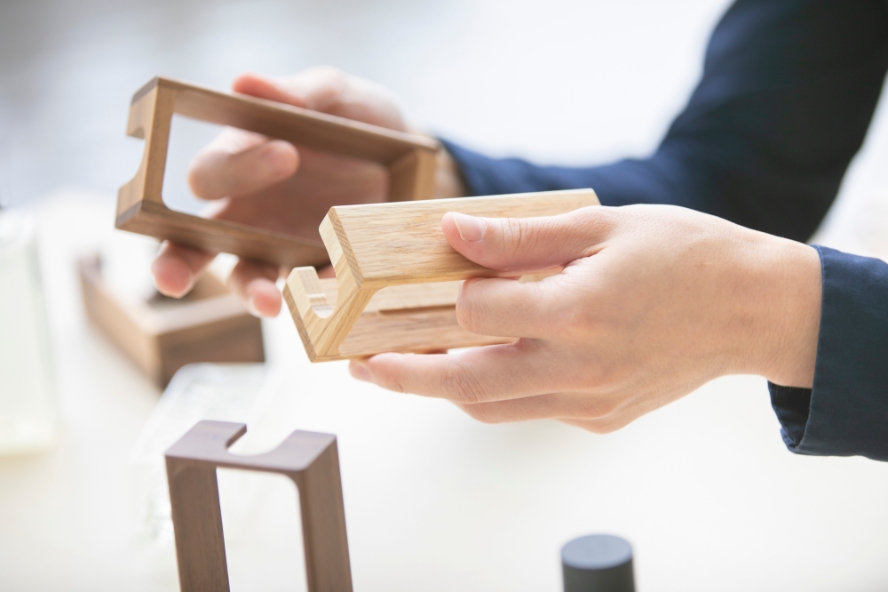
Wooden frame models made in countless
One year since its launch. Happy to know many users experienced its value on various levels.
―One year has passed since its launch. How did you feel about the reactions of customers and society in general?
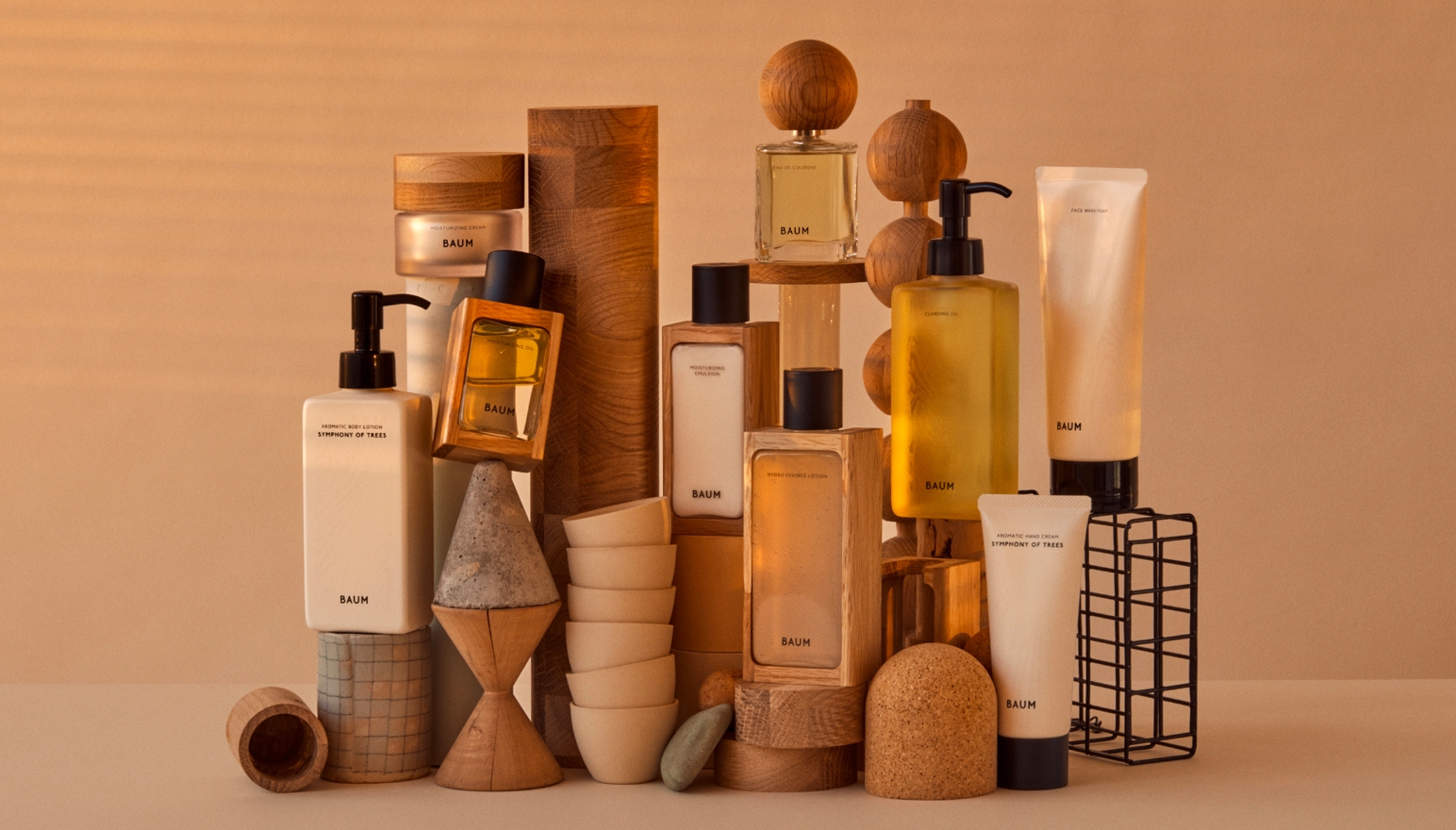
Return and circulate blessings. Future sustainability sought by BAUM.
―So BAUM keeps on evolving.
―It was the passion of all the members that realized this unprecedented project through repeated trial and error, wasn’t it?
ABOUT US
- Who we are
- History
- Profile
- Governance
- Quality Management
- Supply Network
- Region/Business
BRANDS
- Prestige
- Premium
- Inner Beauty
- Life Quality Makeup
SUSTAINABILITY
- Strategy / Management
- Society
- Environment
- Governance
- Reports / Data
- Related Information
INNOVATION
- Research and Development
- Research Areas
- Research outcomes
- Product safety
- Product Development Policy
- Initiatives for doctors and researchers
CAREERS
INVESTORS
- IR Library